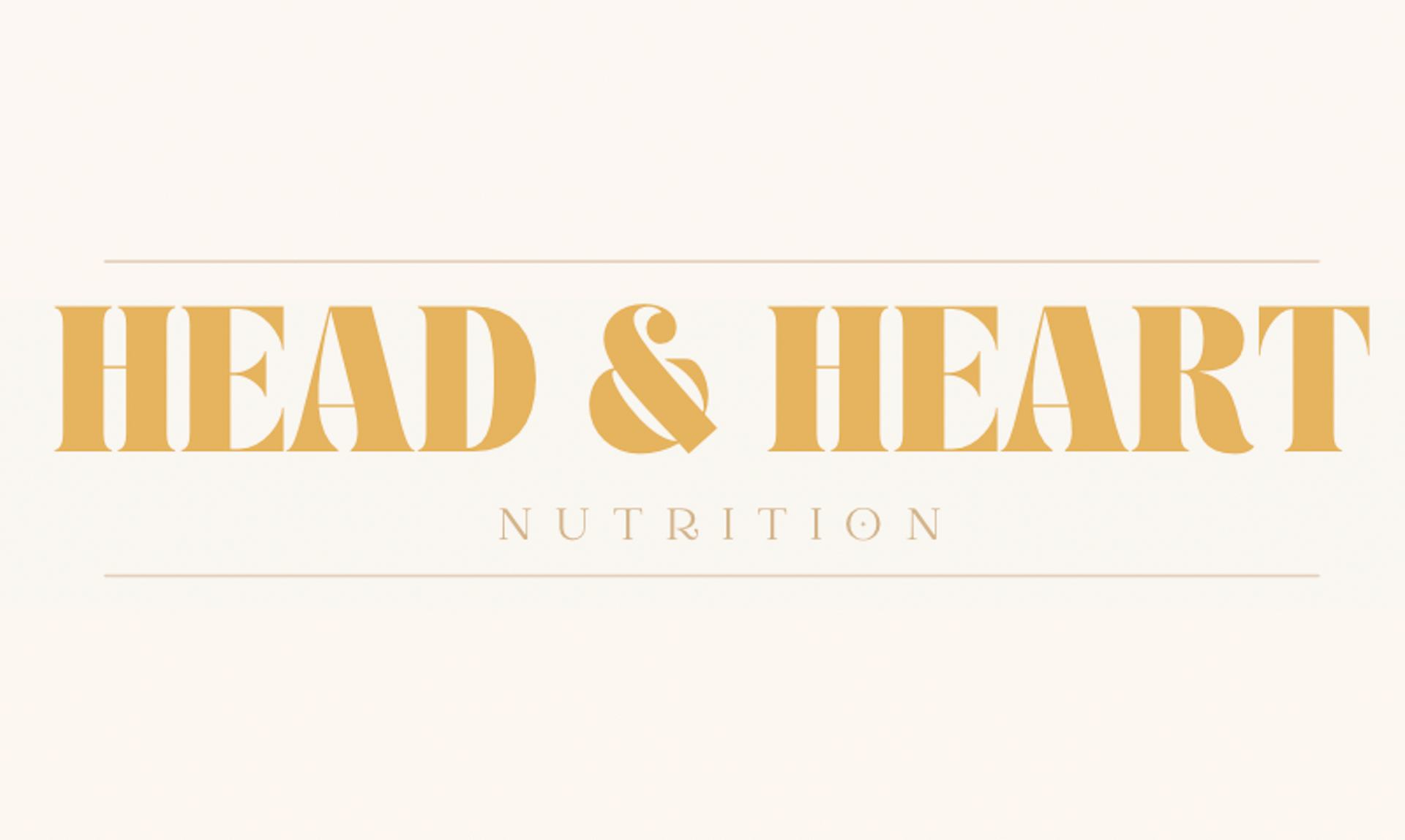The Habit Loop of Food Guilt: How to Reprogram Your Brain for a Healthier Relationship with Eating
Break Free from Shame, Understand Habit Loops, and Use Evidence-Based Strategies to Make Peace with Food

Introduction: The Weight We Carry Beyond the Plate
Food guilt is one of the most pervasive yet least discussed forms of emotional distress in our modern world. That sick feeling after enjoying dessert, the shame spiral following a "cheat day," the endless cycle of restriction and overeating—these experiences aren't just passing discomforts but neurological patterns etched deep in our brains.
This comprehensive guide merges psychological insights with neuroscience to help you:
- Understand how food guilt develops in your brain and body
- Recognize the societal and generational forces shaping your eating patterns
- Implement evidence-based strategies to rewire your neural pathways
- Distinguish between helpful and harmful approaches to "healthy" eating
- Cultivate genuine food freedom through science and self-compassion
Part 1: The Roots of Food Guilt - How Shame Becomes Hardwired
The Three-Layered Foundation of Food Shame
1. Societal and Media Influences:
The $70 billion diet industry thrives on making us feel inadequate and profits off of our insecurities. It’s no accident that just as people start to feel comfortable in their bodies, a new beauty trend emerges. From the ultra-thin "heroin chic" of the 90s to the surgically sculpted hourglass figures of today, these ideals are constantly evolving and unattainable by most. This endless cycle keeps people chasing the next fix, often through harmful dieting and disordered eating behaviors. Media and food companies perpetuate this cycle through:
- Wellness and food choices are often moralized: with “clean eating” and “guilt-free” labels implying that discipline equals virtue and certain foods are inherently “good” or “bad.” This framing promotes guilt, normalizes restriction, and masks disordered eating as healthy behavior.
- Quick fixes and fad diets promise rapid results with little effort: often promoted by influencers marketing supplements or programs they don’t actually use. This creates false hope, encourages unsustainable behaviors, and can lead to physical and emotional harm.
- Trendy content like “What I eat in a day” often portrays restrictive, performative eating: this isn’t reflective of balanced or sustainable nourishment, especially when paired with curated bodies and lifestyles.
2. Generational and Family Patterns
Food beliefs and behaviors are often passed down unconsciously through families, shaping how we relate to eating, hunger, and our bodies from a young age. Many people inherit food guilt and disordered thinking through these early experiences, including:
- "Clean plate club" mentalities: Encouraging children to finish everything on their plate, regardless of fullness, teaches them to ignore internal hunger and satiety cues. Over time, this can disrupt intuitive eating and create a disconnection from bodily needs.
- Diet talk and body criticism: Hearing others criticize their own bodies or frequently discuss dieting sends a powerful message that thinness equals worth and food is something to control. Even well-meaning comments like "You don’t need that second helping" and "Wow you were hungry today!" can have lasting impacts on body image and self-trust.
- Using food as a reward or punishment: When treats are given only for good behavior or withheld for misbehavior, it reinforces emotional ties to food. This can create a pattern of turning to food for comfort or viewing it as something to earn or deserve, rather than a basic need.
- Restricting or labeling certain foods as “bad”: Families that limit access to sugar, carbs, or processed foods, even with good intentions, may unknowingly increase children’s fixation on those items. This restriction can lead to secretive eating, bingeing, or long-term guilt around those foods in adulthood.
3. The Brain’s Reward System
Labeling foods as “bad” or off-limits doesn’t just impact our mindset, it actually changes how our brain responds to those foods. This creates a powerful biological and psychological cycle that reinforces disordered eating patterns:
- Increased dopamine response: When a food is forbidden, the brain perceives it as more desirable. Anticipating or consuming a “bad” food releases a surge of dopamine which makes the experience feel more intense and rewarding than it would if the food were neutral.
- Activation of the amygdala (fear and threat center): If we eat something we’ve been taught to fear or avoid, the amygdala can light up, triggering stress and anxiety. Instead of enjoying the food, we feel guilt, shame, or fear.
- The guilt-reward cycle: This pattern becomes self-reinforcing. We crave the “forbidden” food → we give in → we feel temporary pleasure → followed by guilt or shame → we restrict again. The brain links this loop to emotional relief and stimulation, making it hard to break without intentionally shifting our mindset.
The Neuroscience of Restriction
Restricting food physically (not allowing certain foods) or mentally (thinking you “shouldn’t” eat something) does more than create psychological tension. It directly impacts brain function in ways that make cravings and overeating more likely:
- Increased neural activity in reward-processing regions: When certain foods are restricted, the brain’s reward centers become more sensitive to cues related to those foods. This means you notice them more, think about them more, and experience a stronger emotional response when you encounter them, making it harder to resist.
- Reduced prefrontal cortex activity: The prefrontal cortex is responsible for rational thinking, decision-making, and impulse control. When we’re deprived or overly hungry, this area becomes less active. That’s why restriction often leads to “giving in” despite our intentions; the brain isn’t equipped to make balanced choices in a state of deprivation.
- Scarcity mindset and binge cycles: When the brain believes that access to certain foods is limited, it triggers a primal response to "get it while you can." This scarcity mindset drives urgency and often leads to overeating or bingeing once the food becomes available, reinforcing a harmful cycle of guilt and restriction.
Example: If you tell yourself chocolate is off-limits, your brain starts to notice every mention, smell, or sight of it. This hyper-awareness increases cravings, and eventually, when you do eat chocolate, it’s harder to stop - not because you lack willpower, but because your brain is wired to respond strongly after deprivation.
Part 2: Why Conventional Solutions Often Backfire
Many well-intentioned strategies, like replacing “bad” foods with “healthier” versions, may seem helpful on the surface, but these approaches often backfire because they don’t address the underlying beliefs and emotions that drive eating behaviors. Instead, they reinforce restriction, perpetuate guilt, and disconnect us from our true needs.
- They Maintain the Moral Food Hierarchy: Swapping regular pizza for cauliflower crust or choosing low-calorie desserts may feel virtuous, but these choices often stem from the belief that certain foods are “bad” and should be avoided. This mindset keeps you trapped in a cycle of judgment:
- You're not really giving yourself permission to enjoy the food you want — you're trying to “hack” your way around it.
- It reinforces the idea that pleasure or satisfaction from food is something to be earned or managed.
- Over time, this erodes trust in your body’s cues and keeps you disconnected from intuitive eating.
- They Create Psychological Deprivation: Even if you're physically eating something, your brain notices when it’s not what you truly want. This disconnect is called psychological deprivation, which keeps cravings alive and often intensifies them:
- Studies show that people given "diet" versions of foods tend to eat up to 35% more of the real food once they are in front of it, compared to those who ate the food they were actually craving.
- When your brain feels deprived, it amplifies your focus on the forbidden item and may eventually lead to overeating or bingeing once willpower wears down.
- They Mask Emotional Needs: Sometimes, we turn to food not because we’re physically hungry, but because we’re trying to meet emotional needs — like comfort, celebration, or distraction. Swapping a comforting choice (like chips or ice cream) for something unsatisfying (like rice cakes or protein bars) doesn’t address the real need:
- If you’re stressed, lonely, or bored, food swaps are just a distraction — not a solution.
- This avoidance can delay emotional processing and increase the likelihood of emotional eating down the line.
When Swaps Help vs. Harm
Food swaps — like choosing Greek yogurt over sour cream, or opting for zucchini noodles instead of pasta — aren’t inherently good or bad. What matters most is why you’re making the choice. Are you honoring your preferences and body’s needs, or are you operating from guilt, fear, or a sense of moral worth?
Helpful Swaps: Rooted in Curiosity, Preference, or Self-Care
These decisions are guided by internal cues like taste, satisfaction, energy levels, or digestive comfort. They come from a place of nourishment, not punishment.
- “I prefer zucchini noodles for the texture.” - There’s no shame in the alternative and no judgment on the original. This is about taste and enjoyment.
- “I’m adding protein to feel more satisfied.” - You’re tuning into your body’s signals and adjusting your meals to feel fuller, more energized, or supported.
- “This version helps my digestion feel better.” - A choice based on how your body feels — not how you think it should look.
Harmful Swaps: Rooted in Guilt, Morality, or Restriction
These choices stem from external rules, shame, or the belief that some foods make you “bad” or “good.” They reinforce disordered thinking and disconnection from your body’s true needs.
- “I have to eat cauliflower rice because white rice is bad.” - This keeps you in a food morality mindset, suggesting one choice is “wrong” rather than just different.
- “I earned this dessert by being ‘good’ today.” - This creates a reward/punishment relationship with food, implying that food access is conditional based on your behavior.
- “I’m trying to avoid carbs even though I’m craving them.” - Suppressing cravings in the name of control often leads to rebound eating and increased food fixation later.
The Binge-Restrict Cycle: A Neurological Trap
This is one of the most common and misunderstood eating patterns. Many people blame themselves for "lack of willpower," but neuroscience shows that repeated cycles of restriction and bingeing are driven by brain chemistry, not character flaws.
1. Restriction:
- The Brain's Alarm Bells Go Off: When you label certain foods as "off-limits" or drastically cut calories, your brain perceives a threat to survival.
- Biological response: Your body ramps up cravings for high-energy foods.
- Neurological response: Dopamine (the brain’s reward chemical) increases in response to cues for "forbidden" foods, making them even more tempting.
- Psychological response: You may feel “in control,” but it's often anxiety-based and unsustainable.
2. Deprivation:
- Willpower Weakens: Over time, restricting calories or specific foods lowers activity in the prefrontal cortex (the brain’s rational, decision-making center).
- You become more reactive and less able to pause or think clearly before acting.
- Cravings intensify, not just physically but emotionally.
- Your body enters a “scarcity mindset,” constantly scanning for food.
3. Binge:
- Emotional + Biological Rebound: Eventually, the tension breaks. The amygdala (your brain’s fear/emotion center) becomes more active, and eating becomes urgent and emotionally charged.
- Often triggered by stress, hunger, or exposure to restricted foods.
- You eat quickly, often past fullness, driven by survival instincts.
- This may feel like a “loss of control,” but it’s a predictable, biologically driven response to deprivation.
4. Guilt + Shame: The Cycle Resets
- After a binge, guilt sets in. Many people vow to “get back on track” which usually means tightening restrictions again.
- This guilt reinforces the belief that you can’t be trusted around food.
- Restriction begins again… and the cycle continues.
Breaking the Cycle Requires More Than Willpower
This isn’t a matter of discipline, it’s a neurological loop. Real change happens when we:
- Nourish consistently: Eating enough throughout the day reduces deprivation-driven cravings.
- Remove moral labels from food: When no food is “forbidden,” it's power fades.
- Build emotional regulation skills: Learning to cope with stress, boredom, or sadness without relying solely on food.
- Rewire beliefs about food and body: Shifting from control to connection.
Part 3: Rewiring Your Brain for Food Freedom
Evidence-Based Strategies to Break Free from the Binge-Restrict Cycle
Healing your relationship with food isn’t about more control — it’s about creating safety, flexibility, and trust in your body and mind. These evidence-based strategies from CBT and DBT can help retrain thought patterns and calm the nervous system.
1. Cognitive Behavioral Therapy (CBT): Changing Thought Loops
CBT helps you identify and reframe distorted thoughts that contribute to food guilt and restrictive patterns.
- Cognitive Restructuring: Replace critical self-talk like “I’m bad for eating this” with neutral or compassionate thoughts like “Food has no moral value, all foods can fit in a balanced life.”
- Behavioral Experiments: Slowly and intentionally reintroduce foods you’ve labeled as “bad” in low-pressure settings. This helps prove to your brain that nothing catastrophic happens, reducing fear over time.
- Journaling: Track your thoughts, emotions, and behaviors to spot patterns like: “I always crave sweets after I skip lunch.” and “Feeling anxious triggers food rules.”
2. Dialectical Behavior Therapy (DBT): Balancing Logic & Emotion
DBT teaches you to regulate emotions and hold space for two truths - like wanting change and accepting yourself now.
- Radical Acceptance: Acknowledge what is without shame: “I ate more than I wanted to, and that’s okay. I’m learning.”
- Wise Mind: Integrate emotional and logical thinking to guide your food choices. “I want ice cream and I know I’ll feel better eating it mindfully than bingeing later.”
- Opposite Action: When guilt tells you to restrict, act against it by nourishing your body. This builds new associations between care and food, instead of punishment and deprivation.
3. TIPP Skills: Calming the Nervous System in Crisis
TIPP skills (from DBT) are powerful tools for managing distress that often triggers emotional eating or shame spirals.
- Temperature: Splash cold water on your face or hold an ice pack to activate the dive reflex, a natural calming response.
- Intense Exercise: A quick 30–60 second burst (jumping jacks, dancing, fast walking) can discharge fight-or-flight energy.
- Paced Breathing: Inhale for 4 seconds, hold for 6, exhale for 8.
- Progressive Muscle Relaxation: Tense and release different muscle groups to bring awareness back into your body and release physical tension.
The Permission Paradox: Why Allowing Leads to Control
It feels counterintuitive, but neuroscience backs it up: the more we allow foods, the less power they hold.
- When we allow all foods without judgment, research shows cravings can drop by 40–60%.
- When we maintain rigid food rules or restrictions, binge episodes can increase by up to 300%.
Restriction keeps the brain in a state of scarcity: it fixates on what's “off limits,” which amplifies desire and undermines self-trust.
Try This Instead:
- Keep previously “off-limits” foods visible: Hiding food increases novelty and temptation. Regular exposure helps your brain de-threaten them.
- Eat those foods regularly in satisfying portions: Deprivation (even mental) can trigger overeating. Allowance teaches your brain it’s safe and accessible.
- Pay attention to how cravings change over time: Many people find that the more they truly allow a food, the less obsessive or urgent the craving becomes.
Part 4: Building Sustainable Food Peace
True food peace isn’t about rigid rules or perfect choices—it’s about creating a sustainable relationship with food rooted in awareness, acceptance, and autonomy. These practices help rebuild trust in your body and quiet the noise of diet culture.
Mindful Eating Practices
Mindful eating helps you shift out of autopilot and back into your body. It’s not about eating slowly or perfectly, it’s about being present and making conscious, compassionate choices.
The 5 Senses Check-In
- Before or during a meal or snack, engage your senses to ground yourself:
- Sight: Notice the colors, shapes, and plating of your food. This can increase satisfaction before the first bite.
- Smell: Inhale the aroma—your brain starts digestion through scent and anticipation.
- Touch: Notice the texture in your hands or on your lips and tongue. Is it smooth, crunchy, soft?
- Taste: Let the flavors linger. Can you identify sweet, salty, sour, umami, or bitter?
- Sound: Tune into the crunch, sizzle, or quiet moments. This brings awareness and presence to your eating experience.
- This practice can enhance satisfaction and help you better recognize fullness cues—because satisfaction isn’t just physical, it’s sensory and emotional too.
Hunger and Fullness Scale (1–10)
- Instead of relying on external cues (like the clock or calories), tune into internal cues to guide eating:
- 1–3: Hungry- your body is signaling the need for nourishment (growling, lightheadedness, low energy).
- 4–6: Comfortable- satisfied but not stuffed. This is often the sweet spot for energy and focus.
- 7–10: Full to overfull- physical discomfort, sluggishness, or regret may appear if this becomes habitual.
- There’s no “perfect” number, this tool helps with curiosity, not control.
Reframing with Neutral Language
- The way we talk about food shapes how we feel about it. Shifting from guilt-based language to neutral or positive phrasing reduces shame and empowers choice.
- Old Phrase New Reframe
- “Cheat meal” “Planned enjoyment”
- “I was bad today” “I honored what my body wanted”
- “I shouldn’t be eating this” “All foods can be nourishing”
- “I have no self-control” “I’m learning to listen to my cues”
- “I’m addicted to sugar” “I’m exploring my relationship with sweets”
Language is powerful—reframing helps untangle morality from eating and supports a more peaceful relationship with food.
Addressing Emotional Eating
Common emotional triggers for eating include stress, boredom, loneliness, and fatigue. If you find yourself eating soon after your last meal, feeling unsatisfied or searching for something that will "hit the spot," or overeating more frequently, especially late at night or when you're alone, take a moment to check in with yourself. Ask, "Am I feeling stressed, bored, lonely, or tired?" Addressing your true emotional needs rather than turning to food can help improve your relationship with both yourself and food.
When to Seek Professional Help
You don’t have to do this alone. Consider reaching out to a therapist, registered dietitian, or support group if you notice:
- Frequent binge-restrict cycles that feel out of your control
- Using food as your primary coping mechanism for emotions
- Significant disruption in daily life due to food preoccupation or guilt
Healing your relationship with food is just as worthy of care and support as any other mental health journey.
Conclusion: Your Brain on True Food Freedom
True food freedom isn’t found in restriction or substitution, it’s discovered in the neural pathways of self-trust and the mindful space between craving and choice.
Every time you:
✔ Eat without judgment
✔ Challenge a long-held belief
✔ Respond to cravings with curiosity instead of fear
…you are literally rewiring your brain.
Food is meant to be nourishing and enjoyable. By understanding the neuroscience behind your eating patterns and choosing self-compassion over self-criticism, you begin creating not just better habits, but a healthier, more peaceful relationship with yourself.
Sources
- Bacon, L., & Aphramor, L. (2011). Weight science: Evaluating the evidence for a paradigm shift. Nutrition Journal, 10(1), 9. https://doi.org/10.1186/1475-2891-10-9
(Seminal critique of diet culture’s psychological harms) - Duarte, C., Pinto-Gouveia, J., & Ferreira, C. (2017). Escaping from body image shame and harsh self-criticism: Exploration of underlying mechanisms of binge eating. Eating Behaviors, 25, 54–58. https://doi.org/10.1016/j.eatbeh.2016.03.007
(Links guilt/shame to binge cycles) - Fitzsimmons-Craft, E. E. (2011). Social psychological theories of disordered eating in college women. Clinical Psychology Review, 31(8), 1224–1237. https://doi.org/10.1016/j.cpr.2011.07.011
(Examines moralization of food choices) - Hilbert, A., et al. (2014). Meta-analysis on the effectiveness of psychological treatments for binge eating disorder. International Journal of Eating Disorders, 47(3), 305–321. https://doi.org/10.1002/eat.22244
(Includes guilt reduction in treatment efficacy) - Mann, T., et al. (2007). Medicare’s search for effective obesity treatments. American Psychologist, 62(3), 220–233. https://doi.org/10.1037/0003-066X.62.3.220
(Evidence on how dieting perpetuates guilt/weight cycling) - Marketdata LLC. (2023). The U.S. Weight Loss & Diet Control Market. (Documents $70B diet industry profiting from guilt)
- Pearl, R. L., & Puhl, R. M. (2018). Weight bias internalization and health: A systematic review. Obesity Reviews, 19(8), 1141–1163. https://doi.org/10.1111/obr.12701
(Connects internalized guilt to health outcomes) - Schaumberg, K., et al. (2017). The science behind the Academy for Eating Disorders’ nine truths about eating disorders. European Eating Disorders Review, 25(6), 432–450. https://doi.org/10.1002/erv.2553
(Debunks myths fueling food guilt) - Satter, E. (2008). Secrets of Feeding a Healthy Family. Kelcy Press. (Guilt-free feeding framework)
- Tribole, E., & Resch, E. (2020). Intuitive Eating, 4th Edition. St. Martin’s Press. (Chapter 3: “Make Peace with Food”)
- Tylka, T. L., et al. (2014). The Weight-Inclusive versus Weight-Normative Approach to Health: Evaluating the Evidence for Prioritizing Well-Being over Weight Loss. Journal of Obesity, 2014, 983495. https://doi.org/10.1155/2014/983495
(Alternatives to guilt-based weight paradigms) - Webb, J. B., et al. (2013). Do you see what I see?: An exploration of inter-ideal body size comparisons. Body Image, 10(3), 369–379. https://doi.org/10.1016/j.bodyim.2013.03.005
(Media’s role in food/body guilt) - Wansink, B., & Payne, C. R. (2008). Consequences of belonging to the “clean plate club.” Archives of Pediatrics & Adolescent Medicine, 162(10), 994–995. https://doi.org/10.1001/archpedi.162.10.994
(Childhood origins of guilt-driven eating)









